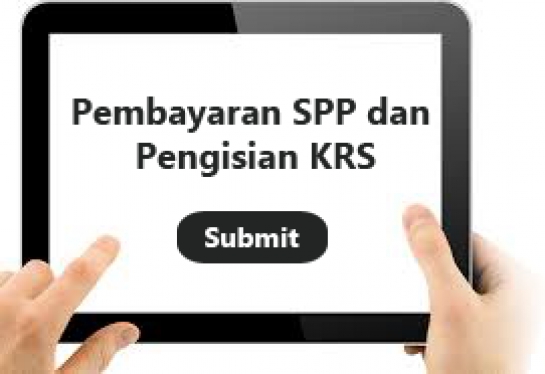
admin
Diberitahukan kepada mahasiswa Program Pascasarjana Univernitas Andalas setelah melakukan Ujian Akhir Semester Ganjil, maka kita memasuki semester Genap 2016/2017 yang mana ada beberapa hal kewajiban yang harus dipenuhi yaitu :
- Pembayaran SPP Mahasiswa Lama Secara Online tanggal 2 sampai 13 januari 2017 ke Bank
- Pengisian KRS online pada tanggal 2 sampai 14 Januari 2017 di portal akademik
Berdasarkan jadwal diatas, maka diharapkan mahasiswa menyelesaikan kewajibannya agar proses belajar mengajar pada semester genap berjalan lancar.Terima kasih
Setelah melakukan rapat pemilihan calon koordinator program Doktor (S3) Ilmu Pertanian pada hari selasa 13 desember 2016, maka hari jum'at tanggal 23 desember 2016 dilakukanlah pemilihan koordinator program Doktor (S3) Ilmu Pertanian di ruang rapat pimpinan Program Pascasarjana Universitas Andalas lantai 2.
Pemilihan Koordinator ini dihadiri oleh koordinator program studi lainnya beserta dosen pengampu di Program Pascasarjana Universitas Andalas.
Adapun calon koordinator yang terpilih adalah Prof.Dr.Ir. Irfan Suliansyah,MS dan Prof.Dr.Ir. Eti Farda Husin,MS.
Prof.Dr.Ir. Irfan Suliansyah,MS adalah koordinator program Doktor (S3) Ilmu Pertanian periode 2012-2016
Setelah melakukan pemilihan dengan cara voting yang dilakukan peserta rapat, maka didapatkanlah hasil Prof. Dr.Ir. Irfan Suliansyah,MS dengan nilai suara 20 dan Prof.Dr.Ir. Eti Farda Husin , MS dengan nilai suara 1. Maka dengan dengan hasil voting tersebut maka terpilihlah Prof.Dr.Ir. Irfan Suliansyah,MS sebagai koordinator program Doktor (S3) Ilmu Pertanian periode 2017-2020.
 |
 |
 |
 |
FOREWORD
The papers contained in this proceeding originate from the “2015 International Conference on Green Development in Tropical Regions”. Keynote speakers and authors of selected oral and poster presentations were invited to submit a manuscript for publication. Manuscripts were reviewed by the editors, and members of the editorial boards, and papers of a suitable scientific standard feature in this publication. The Steering Commitee appreciates the contributions of all editors and reviewers in improving the quality of this proceeding.
In particular, I wish to express my warmest appreciation to the following people: Our distinguished keynote speaker, Prof. Dr. H. Susilo Bambang Yudhoyono as President of Assembly and Chair of Council Global Green Growth Institute and the 6th President of Republic Indonesia.
Our plenary speakers Prof. Ian Patrick (University of NewEngland, Australia), Prof. Jamal Othman (University of Kebangsaan Malaysia, Malaysia), Dr.Endah Murningtyas (PERHEPI Pusat, Indonesia), Prof. Bustanul Arifin (Lampung University, Indonesia), Prof. Nestor Baguinon (University of the Philippines Los Banos, the Philippines), Dr. Nguyen Van Kien (An Giang University, Vietnam), Dr. Lareef Zubair (Columbia University) and Prof. Rudi Febriamansyah (Andalas University).
We would also like to thank the Perhimpunan Ekonomi Pertanian Indonesia (PERHEPI), PT. Semen Padang Indonesia, Bank Syariah Mandiri, PT. Incasi Raya, Bank Nagari, Pusat Studi Lingkungan Hidup Universitas Andalas, Jurusan Sosial Ekonomi Fakultas Pertanian, Provincial Government of West Sumatera for their collaboration, and a very special thanks to the United States Agency for International Development (USAID) for sponsoring this conference through the PEER project at Andalas University.
Padang, July 2016
Chairman,
Prof. Rudi Febriamansyah, PhD
Director of Graduate Program
Andalas University
POTENTIAL DEVELOPMENT OF AGRITOURISM IN WEST SUMATRA
Widya Fitriana and Dian Hafizah
Dosen Fakultas Pertanian Universitas Andalas Padang,
Dosen Fakultas Pertanian Universitas Andalas,
Corresponding author: widyafitriana66@gmail.com
ABSTRACT
The decreasing of constributions Agriculture sector to Regional Gross Domestic Product in West Sumatera for several years has force goverment to doing strategies diversification to solves this problem. One of strategy that could be chosen is by doing development in agritourism. Aims of the research are (1) to identify and to describe potential development of agritourism in west sumatera (by considering potention of natural resources, human reources, and heritage resources), (2) to identify and to describe potention of activity that could be create related to agritourism. This research using survey methode by observing all of agritourism location in West Sumatra. The result show us that there are seven type of agritourism that can be develope in West Sumatera which are (1) Plantation agritourism (2) holticulture agritourism (3) crops agritourism (4) husbandry agritourism (5) fishery agritourism (6) forrestry agritourism (7) Agroindustry agritourism and related to that, there are so many variety of potency activities that could be create to support development in agritourism such as families gathering/children playgroup, fotography, jogging track/bycycling, horse riding, outbond, plant and harvest experience, traditional heritage attraction, enjoying ecsotic scenary, camping, bird watching etc. The opportunity of agritourism that already serve by nature should be develope and manage profesionally, so it can create adding value for agriculture bussiness itself. If all potention can develope well, it will be the new icon to encourage economic shifment in West Sumatera as precious comodity (mato galeh) in future.
Keyword: agritourism, potential development, regional economic growth




